
ICCROM_ICS10_JukkaFestchrift_en
.pdf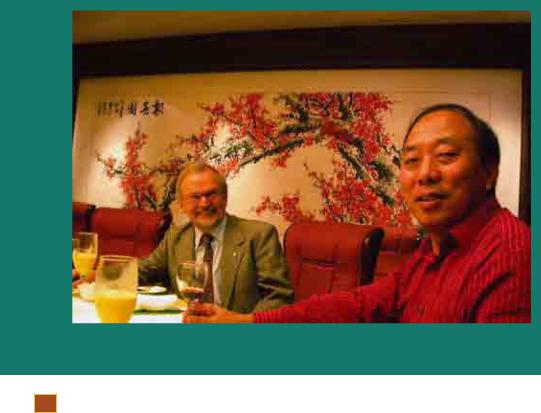
We invited Jukka and another friend to China in a bid to listen to these international experts’ opinions on our intention to nominate several properties for the World Heritage List. Jukka moved me deeply in this process.
In retrospect, in my career related to World Heritage, Dr. Henry Cleere from Britain is the first good friend I can never forget in terms of practice, while the first good friend I can never forget in terms of theory and thinking is Jukka. We talked a lot that night by the Yangtze River.
China’s cultural heritage world has its own simple language for maintenance of cultural heritage, i.e. “repairing the old as old”. But colleagues have disputed the word “as” and the word “old” for many years. The Law of the People’s Republic of China on Protection of Cultural Relics stipulates that in repairing and maintaining cultural relics, the principle of keeping the cultural relics in their original state should be adhered to. However, based on different ideologies about authenticity and integrity, people differ on the definition and pursuit of what the “original state” and “current state” are in practice. The influence of concepts and theories on relevant practice is self-evident. The discussion I started with Jukka about the philosophy of cultural heritage protection provided a new perspective and enriched my view. From then on, this beneficial discussion has never stopped.
We are talking about the relation between uniqueness and universal value. You cannot find
Fig. 2. Jukka and the author in X’ian, China, 2005 (photo Azar Soheil)
two entirely identical leaves in the world. This is not enough to demonstrate outstanding universal value. However, people will generally be attracted and stimulated into thinking if cultural representativeness and diversity are involved.
Faced with the West Lake, which the Chinese people call ‘paradise in the human world’, Jukka disregarded his host’s disappointment and commented realistically there were thousands of such lakes in his home country of Finland. However, changing the topic of conversation, he continued to tell the host at the West Lake: “But it’s entirely different when the cultural meaning is added.” This plunged the host into deep excitement and contemplation.
The importance of authenticity is so deeply rooted in people’s minds. But Jukka was still being provocative. Even his jokes were touched with provocation. He would ask me suddenly: “Is today’s Jukka yesterday’s Jukka? There must be changes. So, am I still authentic?” He also mentioned jokingly that the concept of “authenticity of an evolutionary process” was used when the authenticity in a project to extend a World Heritage site nominated by a State Party was compared with the authenticity in the original project. But he was not unthinking. In studying and demonstrating the authenticity of a restored old bridge, he taught his colleagues in a workshop, who were leaders of provincial and municipal cultural heritage departments from across China, a vivid philosophic lesson about how to understand authenticity, ranging from the
evolution of history to the process, means and methods of restoration, from the material carrier to cultural background and public emotions, and in such aspects as design, function and materials.
Whether understanding the value of cultural heritage or examining authenticity and integrity, we cannot do without comparison, analysis and study from a broad perspective. In traditional courtyards in Shanxi, China, Jukka considered that, if several representative works having such a cultural background differed from those in other human colonies, they would have outstanding universal value. When faced with the outstanding modern temples and gardens built in ancient style by Hong Kong nuns to promote the Buddhist and Chinese architectural traditions, he did not comment on their value by rigidly adhering to
20 Conserving the authentic: essays in honour of Jukka Jokilehto
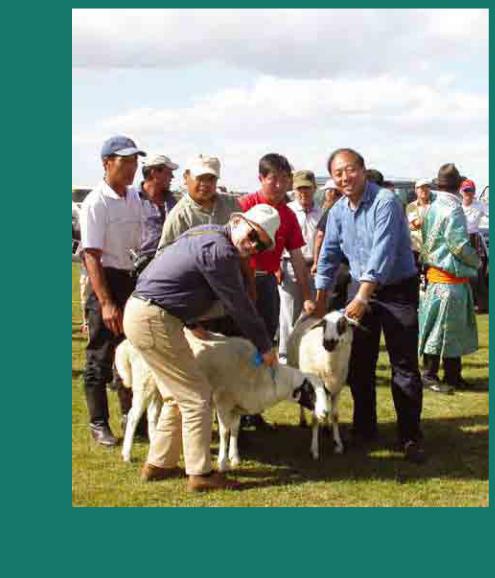
Fig. 3. Jukka and the author presenting prizes to the champion wrestler, Inner Mongolia, China, 2006 (photo Azar Soheil)
their time of construction. Rather, he considered their representativeness and achievements in cultural inheritance, modern life and urban development and whether there was enough evidence to reflect the value of a style. In China’s Inner Mongolia, considering the cultural sites and traditional life of nomadic people who still retained rare cultural characteristics in spite of the strong influence of modernization, he drew the attention of his Chinese colleagues to the Alps and the vast grasslands of Argentina and suggested a possible direction and approach for a World Heritage nomination.
Philosophical thinking and wide comparison, analysis and study are naturally rooted in extensive knowledge and a diligence in pursuing the truth. A well-known saying of Chinese ancient scholars for cultivating morality is “read ten thousand books and travel ten thousand li (1 li = 500
meters).” Jukka has put it into practice. His Chinese colleagues are very grateful to him because he has travelled to almost all parts of China and left his footprints and suggestions everywhere. He even trekked to such tough places as the Lijiashan cave dwellings on the bank of the Yellow River. His “History of Architectural Conservation” is representative of his learning and also the evidence of his diligence, hard work and assiduous study. The Chinese version of the work which can be called a historic masterpiece about cultural heritage protection has been proofread many times and is awaiting my final examination and approval. But my busy life has delayed its official publication and this has become a heavy burden on my mind and body. Nonetheless, I believe my colleagues will see its publication soon.
The accumulation of knowledge and a ceaseless pursuit of and approach to the truth must come from extreme carefulness, practicality and pacificity. Jukka has a strong character in this respect. One of the most interesting things about him is his recalling major and minor facts about the cultural heritage movement. He would tell me accurately the relevant figures, dates, places, courses and the main points of all significant events without any trace of ostentation. For example, his narration of the birth of Venice Charter and its principles would make a profound impression on his colleagues and help their understanding of it for the future. I like very much to discuss professional terms and ideologies with him, especially when they are confused in translation. Correct
translation is often not only a matter of language but also of cultural background. This is true whether we are concerned with monuments and sites, or with such terms as conservation, protection, preservation, and restoration, or heritage, property and relics, and contexts. Jukka was pleased with the change in the English translation from the ‘State Bureau of Cultural Relics’ to the ‘State Administration of Cultural Heritage of China’, for apart from the meanings of words and the ideology, the change also indicated the substantial progress of China’s cultural heritage cause.
His language ability is very strong, though he once told me he did not try to memorize words unrelated to his profession except in his mother tongue.
His preciseness and honesty are also reflected in dealing with people. Once an international colleague curried favor with him and praised one of his
5 Jukka in China: philosophy, personality and contributions |
21 |
|
|
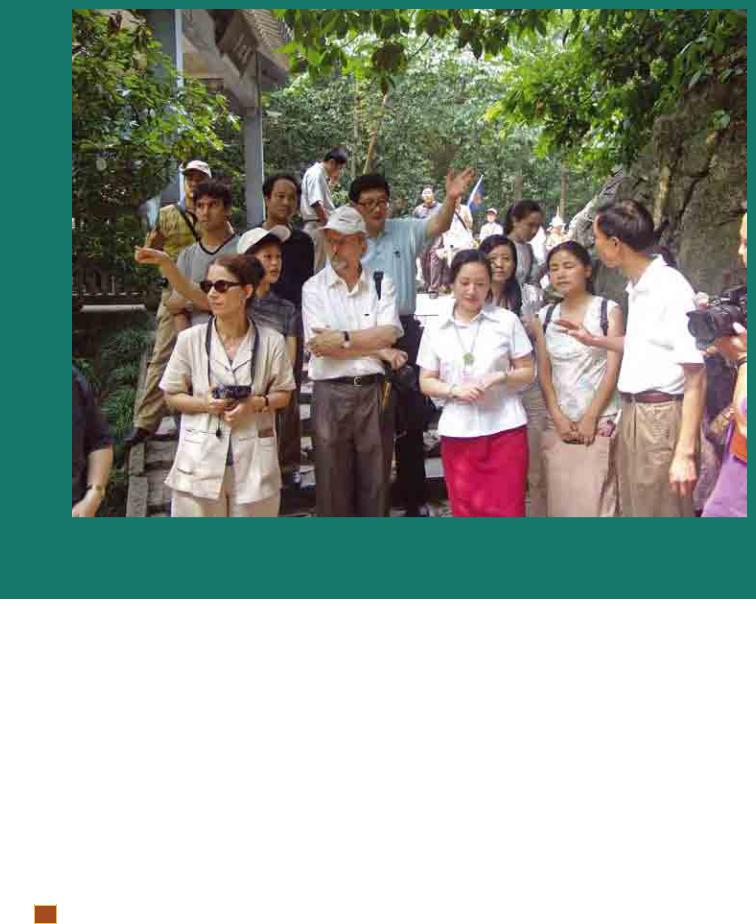
Fig. 4. Jukka and Azar Soheil visiting the West Lake at Hangzhou, China (photo Guo Zhan)
lectures by quoting another learned colleague, but Jukka pointed out in perplexity that that colleague had not come to that lecture. On another occasion, when Jukka and I were spiritedly discussing a professional concept in the conference hall at UNESCO’s headquarters in Paris, a Chinese official chimed in and asked me arrogantly to translate for Jukka what he had just said – in order to show his authority. He tried to be on intimate terms with Jukka. But Jukka told me: “You tell him that I have other things to do and you can talk yourselves!” and left the official there. This made me so happy although I had pretended to that strange man that nothing had happened. Jukka was so lovably straightforward and honest!
But he is especially understandable, tolerant, patient and friendly to ordinary people. The Chinese
people’s warmth and hospitality to guests are world-famous, but sometimes they cannot consider adequately their guests’ real needs and their own customs and personal wishes in the light of this hospitality. In some remote areas, guests from afar, especially foreigners, are embarrassed by their hosts’ hospitality. I remember that when I accompanied Jukka on an inspection of the ancient city along the Marine Silk Road, i.e. Quanzhou in Fujian Province, China (the “Erythrina” recorded by ancient Arab merchants), the local crowds and reporters followed and stood in front of us to take photos ceaselessly with no-one listening to our objections. I could not but get worried and displeased. However, Jukka remained unruffled. He grinned to the photographers in front of him: “I like you very much. But I came here today for
22 Conserving the authentic: essays in honour of Jukka Jokilehto
an inspection and to work. Can you also let me take some photos of the ancient buildings?” Most people went away shyly. Jukka’s kind and humorous expression in his eyes at that moment has remained strongly in my memory.
We have been good friends for so many years, but rarely has he turned to me for help with private matters. Whenever he communicates with me, he always talks about our work. There was only one exception, when his younger son Dara was studying at the University of Leeds which organized for students a temporary period of study in China. Since this young child would come to such a remote and strange country as China, Jukka wrote me a short letter, hoping I could take care of him because “he is too young after all!” In that year, Dara was just 18 years old, an age that in China is still dependent on parents. This reminded me of the eminent Chinese writer Lu Xun’s poem about the strong tigers who also love baby tigers and made me experience his tender feelings and loving heart.
As to my needs, Jukka grants almost whatever I request. Sometimes it was background information on some significant events and literature. Even though it might involve a substantial book, I would always receive his gift to me.
As a leader in the study and practice of cultural heritage theory, Jukka has made a great contribution in China. Apart from theoretical discussions and training personnel, he has promoted and provided consultation on significant projects every year. In 2007, the State Administration of Cultural Heritage of China, ICOMOS, ICCROM, the WHC of UNESCO and ICOMOS/China held The International Symposium on the Concepts and Practices of Conservation and Restoration of Historic Buildings in East Asia, which was attended by more than 60 representatives from over 20 countries and many international organizations. Jukka helped us to finish the important Beijing Document, a great achievement of the meeting. This document has been praised by international colleagues as “not only having guiding significance to East Asia, but also being of reference value to the whole world.”
I have a very strong desire these days to further promote the study and management of cultural landscapes to a higher level. I especially want to develop this significant subject, for which there are urgent practical needs, a range of meanings and a far-reaching influence in China, in the light of the practical conditions in China, so as to enable international colleagues to reach a deeper consensus about it, to guide relevant work in the future more consistently and vigorously, and to be more
proactive in the protection of cultural diversity and continuity. Jukka supports this heartily.
I have been friends with Jukka for many years and have countless recollections when talking and thinking of him. The deepest impression is always about his philosophy, his unique personality and his outstanding contributions to the theory and practice of global cultural heritage protection. He has always intended to include China’s experience of cultural heritage in his work. I will help him to realize this wish.
China also has many events needing his participation and assistance. Therefore I always tell him: take good care of yourself and live happily. Chinese colleagues love you and expect to have more brilliant cooperation and success when working with you.
5 Jukka in China: philosophy, personality and contributions |
23 |
|
|
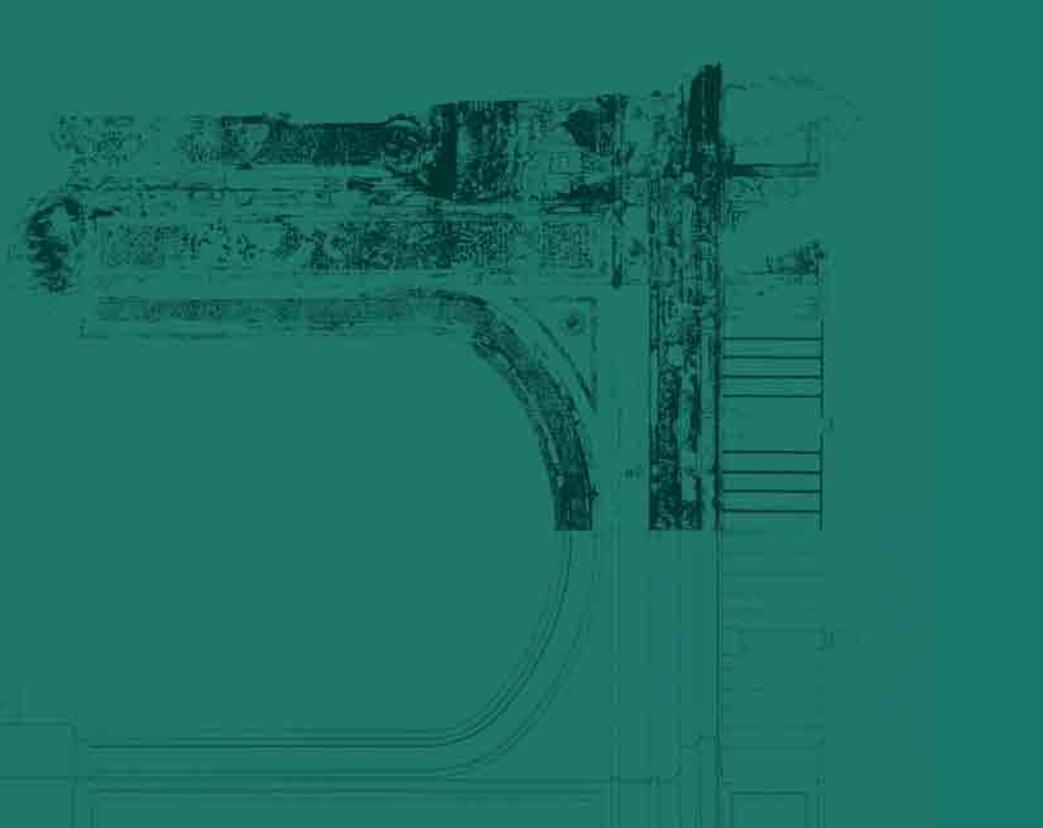
Conservation of buildings
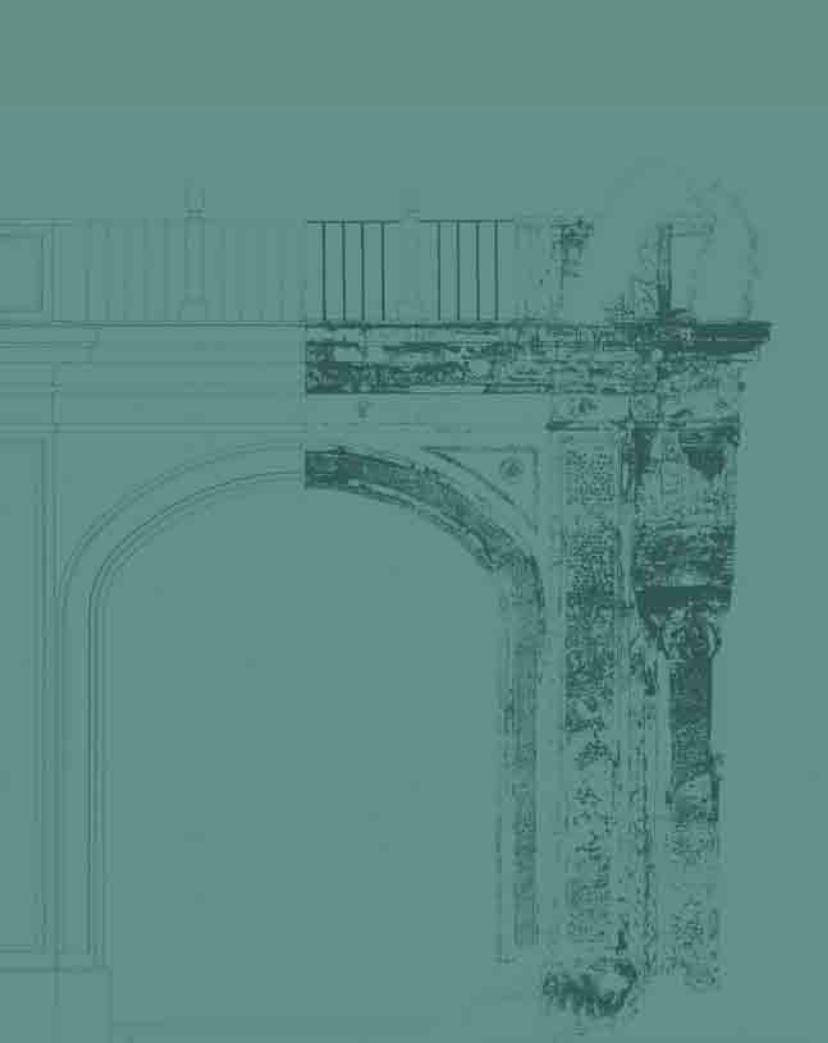

6
Alcune riflessioni, da parte italiana, sul restauro architettonico1
[ Giovanni Carbonara]
L’educazione al restauro è in primo luogo educazione alla libertà di pensiero e d’indagine; l’attività di restauro si nutre del dubbio che è proprio della ricerca
storica, richiede apertura mentale ed equilibrio, rigore concettuale ed insieme spirito pratico. Quindi ciò che si può insegnare non è un insieme di precetti né di regole né, in prima istanza, di tecniche ma, al massimo, un metodo di approccio a problemi che si pongono, ogni volta, in modo diverso e imprevedibile.
Monumenti e restauro
Il restauro è una disciplina relativamente giovane, che affonda le sue radici tanto nella moderna ricerca storica quanto nelle tradizionali pratiche di manutenzione tese a preservare un oggetto, di riconosciuto valore, dal degrado così da prolungarne la vita. Tuttavia esso si distingue dalla semplice rimessa in efficienza, per ragioni d’uso o economiche, d’un qualsiasi prodotto dell’attività umana e si rivolge, invece, ai monumenti, intesi nel loro senso etimologico di ‘documenti’, unici e irripetibili, espressioni di gusto, d’arte, di sapiente ‘cultura materiale’, oltre che dello stesso fluire del tempo.
1 An abstract in English can be found at the end of the paper.
È noto che non esiste vero rimedio alle mutilazioni e ai danni subiti da un monumento, per trascuratezza o per attenzioni improprie; si potrà effettuare una riparazione o anche una copia al vero, ma l’originalità di ciò che s’è perso rimarrà irrecuperabile. Ciò impone un approccio eminentemente conservativo, informato a criteri di massima cautela e di rispetto. Dopo un’attenta fase analitica e d’indagine, s’opererà con tecniche commisurate alle reali necessità dell’antico manufatto e dei suoi materiali. Per questo sarebbe quanto mai opportuno garantire la continuità del gruppo di lavoro dedito allo studio e al rilievo, alla stesura del progetto, alla stessa direzione dei lavori che, con strumenti ed opportunità nuove, prolunga in cantiere la medesima fase di ricerca.
Senza troppo distinguere il restauro dei monumenti architettonici o archeologici da quello delle cosiddette opere d’arte mobili, si dovrebbe parlare d’unità di metodi e di principi, nella pluralità delle tecniche applicative. Nonostante l’indiscutibile specificità tecnologica dell’intervento edilizio, sul piano teoretico risulta quanto mai corretto e fruttuoso riferirsi ad una salda ed unitaria elaborazione nel campo delle tradizionali ‘arti del disegno’. A differenza di quanto avviene in altri settori artistici (come la poesia o la musica) in quello tradizionalmente figurativo (dalla pittura all’architettura) il restauro lavora sempre e soltanto su originali, con tutti i rischi d’errore e di danno, quindi con tutta la prudenza che tale circostanza comporta.
6 Alcune riflessioni, da parte italiana, sul restauro architettonico |
27 |
|
|

Ne conseguono discrepanze specie riguardo al cosiddetto problema della ‘rimozione delle aggiunte’ oltre che della ‘reintegrazione delle lacune’, entrambi momenti ineludibili d’una concezione del restauro tesa a facilitare la “lettura” (art. 4 della Carta italiana del restauro, 1972) del manufatto contribuendo, insieme, alla sua conservazione, dandogli compattezza e continuità fisica, quindi capacità di autodifesa (il “mantenere in efficienza” della medesima Carta, sempre all’art. 4). Ciò ricade nella duplice funzionalità del restauro, riparativa e consolidativa da un lato, denotativa e connotativa, cioè di perpetuazione dell’identità dell’opera, dall’altro; né mai esso risulterà figurativamente neutro, privo d’incidenza sull’immagine, quasi potesse esistere un modo di conservare asettico e distinto dal restauro. Risulta invece chiaro che anche ‘conservare’ e ‘mantenere’ significano trasformare, certamente in maniera controllatissima ma pur sempre trasformare e che si tratta d’orientare con discernimento l’inevitabile modificazione, sapendone esaltare le valenze conservative ma senza trascurarne le inevitabili implicazioni estetiche e formali. Da qui la particolare complessità del progetto di restauro.
La questione della rimozione delle aggiunte e della reintegrazione delle lacune rimanda alla dialettica, già affrontata in sede teorica da Cesare Brandi (1977), delle due ‘istanze’: quella ‘della storicità’ che vorrebbe la piena conservazione di quanto proviene dal passato; quella ‘estetica’ che, al contrario, postulerebbe maggiore libertà operativa per restituire all’opera la sua bellezza, offuscata dal tempo e dalle vicende subite. Va subito chiarito che non si tratta d’operazioni uguali e contrarie, distinte dall’asportazione di ‘materia antica’ in un caso, dall’aggiunta di nuova nell’altro, ma di due atti radicalmente diversi: la rimozione è perlopiù irreversibile e non testimonia a vista se stessa, la reintegrazione può invece godere d’una sua immediata ‘riconoscibilità’ e della valvola ulteriore della ‘reversibilità’ (o ‘rilavorabilità’ o anche ‘rimovibilità’), in caso si voglia correggere o perfezionare, anche a distanza di tempo, l’intervento. Di conseguenza la prima è riconosciuta come un atto ‘eccezionale’ e potenzialmente rischioso.
Ambedue, comunque, sono attività di natura propriamente filologica, mirate alla restituzione del testo ‘autentico’ dell’opera, da tradurre in una sorta di ‘edizione critica’, condotta sopra un doppio registro (originale/restituzione) idoneo a consentire la fruizione dei frammenti antichi insieme o separatamente dagli emendamenti apportati.
Da qui un continuo lavoro, soprattutto in ambito archeologico, d’elaborazione di modalità operative, parallele a quelle proprie della filologia letteraria,
per comunicare a vista, specie in riferimento al tema della reintegrazione delle lacune, il ‘grado di certezza’ loro attribuito ed altre informazioni: contrassegni e targhette indicanti la data e la natura dei lavori; perimetrazione (con frammenti laterizi, lamine metalliche o un semplice solco nell’intonaco) delle riprese murarie; sottosquadri; sfalsamento dei giunti verticali, negli apparecchi murari in laterizio; peculiari trattamenti superficiali riservati a mattoni e pietre di restauro, con slabbrature dei bordi o anche rigature parallele, analoghe al tratteggio pittorico; ‘segnali’ di riconoscimento fisico-chimici incorporati nelle malte di restauro (tramite studiate modifiche nel numero, nella qualità e nella granulometria delle sabbie) e via dicendo. In sostanza una sorta di metalinguaggio critico che definisce una serie di segnalatori e marcatori ‘diacritici’ (vale a dire, atti a distinguere il nuovo dall'antico) da utilizzare nelle tecniche d’integrazione (su questo si veda De Angelis d’Ossat 1995, 87-92).
Nel concludere si può affermare che in ambito
architettonico |
e archeologico mantengono |
la |
loro efficacia |
riferimenti e principi elaborati |
per |
il tradizionale restauro artistico, criticamente e scientificamente inteso: la distinguibilità, il ‘minimo intervento’ e la sua potenziale reversibilità, il rispetto dell’autenticità e della ‘materia’ antica, la compatibilità fisico-chimica delle aggiunte. Il tutto al fine di conservare il contenuto culturale, la stratificazione storica e la struttura stessa dell’antico monumento, nella serena coscienza di poterne solo rallentare l’inarrestabile degrado, non certo di garantirgli un’impossibile perennità.
Per una definizione del restauro
S’intende dunque per ‘restauro’ qualsiasi intervento volto a conservare ed a trasmettere al futuro, facilitandone la lettura e senza cancellarne le tracce del passaggio nel tempo, le opere d’interesse storico, artistico e ambientale; esso si fonda sul rispetto della sostanza antica e delle documentazioni autentiche costituite da tali opere, proponendosi, inoltre, come atto d’interpretazione critica non verbale ma espressa nel concreto operare. Più precisamente come ipotesi critica e proposizione sempre modificabile, senza che per essa si alteri irreversibilmente l’originale.
In questa prospettiva, si può definire come restauro dei monumenti un’attività rigorosamente scientifica, filologicamente fondata, diretta a ritrovare, conservare e mettere in evidenza, consentendone una lettura chiara e storicamente esatta, le opere che ricadono nella sua sfera d’interesse, cioè i beni
28 Conserving the authentic: essays in honour of Jukka Jokilehto
architettonici e ambientali, in un campo esteso dal singolo edificio alla città, non esclusi il paesaggio e il territorio.
Nel restauro hanno parte preminente le operazioni di carattere strettamente conservativo, tese a preservare dal deperimento i materiali che concorrono alla costituzione fisica delle opere. In questo senso il restauro dei monumenti è da intendersi come disciplina che gode d’un fondamento storico-critico, sostanziato dagli apporti delle tecniche di analisi, rilevamento, rappresentazione grafica e, più propriamente, costruttive, oltre che delle scienze fisiche e chimiche. Tali apporti non dovranno mai costituire un’inerte sommatoria di competenze specialistiche, ma troveranno unità espressiva e concettuale in una soluzione anche estetica del problema, da perseguire con le modalità proprie del linguaggio architettonico.
Nel ‘conservare-rivelare’ (Carta di Venezia, 1964) o nel ‘mantenere in efficienza-facilitare la lettura’ (Carta italiana del restauro, 1972) si riconosce l’elemento qualificante l’operazione di restauro, che non può essere sola o ‘pura’ conservazione da un lato, ma neanche ‘rivelazione’ spinta fino al ripristino, dall’altro.
Il restauro generalmente inteso ed il restauro architettonico non hanno nulla che, sul piano concettuale, possa differenziarli. Il secondo costituisce una particolare accezione del primo, dal quale si distingue non in linea di principio ma praticamente, per la diversa consistenza degli oggetti di cui si occupa. Si dovrebbe parlare d’unità metodologica e di principi nella pluralità di modi applicativi. Ciò contro il rischio di deviazioni in senso pseudo-scientista e tecnicistico, ma anche socio-economico (restauro ‘sociale’ e sopravvalutazione finanziaria dei beni culturali), ideologico-politico (‘riappropriazione della città storica’), praticistico e malamente ‘ri-creativo’ o innovativo (in ragione della naturale tendenza di architetti e ingegneri, addestrati nella progettazione e costruzione del nuovo, a superare i limiti del restauro scientificamente inteso e, fra questi, il fondamentale criterio del ‘minimo intervento’).
A questo punto è necessario esplicitare il significato di due termini fondamentali del nostro discorso: ‘restauro’ da intendere, in prima definizione, come intervento diretto sull’opera ed anche come sua eventuale modifica, condotta sempre sotto un rigoroso controllo tecnico-scientifico e storicocritico; ‘conservazione’, come opera di prevenzione e salvaguardia, da attuare proprio per evitare che si debba poi intervenire col restauro, il quale costituisce pur sempre un evento traumatico per il manufatto.
Le motivazioni del restauro discendono dall’aver preventivamente riconosciuto ad un manufatto un ‘valore’ particolare, artistico o testimoniale, estetico o storico; in ogni caso, dalla sua considerazione come ‘oggetto di scienza’ o, in altre parole, come ‘oggetto di cultura’, testimonianza materiale avente “valore di civiltà”, bene culturale appunto.
Per chiarire meglio la questione, è anche necessario porsi la domanda su che cosa non possa intendersi per restauro.
Non lo sono il ‘ripristino’, il ‘risarcimento’ di una struttura, la ‘riparazione’ funzionale di un oggetto, la ‘reinvenzione’ o il ‘rifacimento’ più o meno integrale di un manufatto (che è operazione da collocare ‘oltre il restauro’). Sono azioni che investono il monumento e lo trasfigurano, sovente rinnovandolo e riprogettandolo completamente, o riducendolo a mero sfondo, quale semplice citazione dall’antico, di un’espressione architettonica o urbanistica radicalmente moderna. In questo caso non si tratta più di restauro perché, della materia antica, resta poco o nulla ed essa non è rispettata nei suoi ‘valori’ ma ridotta a spunto d’una diversa e nuova esercitazione progettuale.
Non sono restauro neanche il cosiddetto ‘riuso’, con i suoi derivati ed analoghi, quali la ‘rivitalizzazione’, la ‘valorizzazione’, il ‘recycling’, il ‘recupero’, tanto in auge oggi nel campo professionale architettonico ed, ancor più, in quello normativo e urbanistico. Operazioni da porsi ‘accanto al restauro’, cui s’avvicinano per il fatto d’investire comunque le preesistenze.
Il riuso, infatti, è un valido mezzo per assicurare la conservazione di un edificio storico e per volgerlo, se possibile, a scopi sociali, ma non è il fine primario né può pretendere di risolvere in sé tutta la problematica del restauro. Il recupero si rivolge indifferentemente, sempre per motivazioni pratiche ed economiche, a tutto il patrimonio esistente maltenuto o inutilizzato, ma non coltiva per sua natura l’interesse conservativo e le motivazioni scientifiche del restauro.
Nonsonorestauro,infine,neanchela‘salvaguardia’, la ‘manutenzione’ e la ‘prevenzione’ di cui s’è detto, tutti interventi importanti ma ricadenti ancora nel campo della ‘conservazione’, intesa in senso stretto, quindi ‘al di qua’ del restauro propriamente detto.
Quanto sopra specificato induce a riconoscere nel restauro un ‘di più’ rispetto alla sola conservazione ed a considerare che esso possa, in maniera culturalmente lecita, svolgere un ruolo di meditata riproposizione, di reintegrazione, di reinterpretazione dell’opera, senza trascurare il dovere ulteriore di dare una ‘forma estetica’ al proprio intervento (restauro ‘critico’ e ‘creativo’).
6 Alcune riflessioni, da parte italiana, sul restauro architettonico |
29 |
|
|
